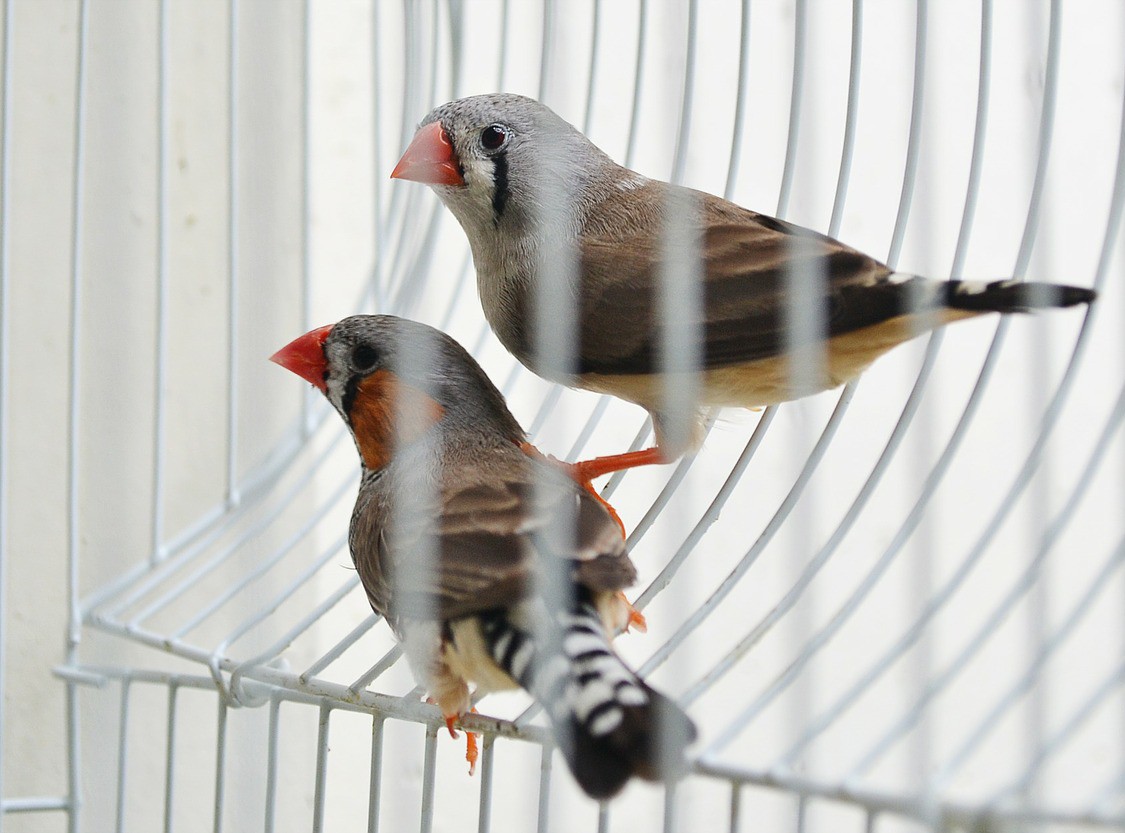One of the most commonly asked questions among finch keepers new and experienced is whether their birds need heat in the winter. While there is no complete answer to the question, there are a few considerations to help guide you as to whether heat is needed and how much.
Bird build

The first thing to look at to help decide if a bird needs help in the British winter is their build and feathering. Firstly, look at a native bird such as the Greenfinch or Sparrow. These are relatively big finches with quite dense feathering that means they can retain heat well. They do this by puffing up their feathers to make an insulation layer as well as sometimes sleeping on only one foot.
Contrast this with the feathering of birds such as the Gouldian finch or the Double barred (Owl) finch. These are smaller birds naturally but also much finer feathered. This means that they have less feathers to puff up and insulate themselves. It also means they are less able to keep up their body temperature as a rule because their natural environment means they don’t need to.
Native homes
Another factor to consider is where does the species come from originally? Okay, these birds have likely never seen their native homes and have been in this country for many generations. But nature built them based on where they live. So a bird from a warm Sub-Saharan African country or from Australia doesn’t need a big heavy layer of feathers because the temperatures don’t get that cold. On the other hand, birds from Northern Europe or North America are more likely to cope with the cold because it is part of the native home climate.

Popular Australian finches include:
- Zebra finch
- Double barred finch
- Long tailed finch
- Plum headed (Cherry) finch
- Gouldian finch
- Diamond firetail
- Star finch
Also from warm climates in Africa are:
- Cordon bleu finches
- Tri coloured parrotfinches
- Red and yellow siskins
Contrast with northern hemisphere birds such as
- Greenfinch
- Goldfinch
- Redpoll
- Virginia Cardinal
Breeding
Another reason that finches may need heat over winter comes from their native homes also – their breeding season. Some birds never adapt to breeding when our climate tells them to and instead stick with the breeding season nature gave them. If they are southern hemisphere birds, then this will be the British winter. Cold can cause three main problems when breeding. Firstly, the hen can become egg bound if she is too cold and this is a killer. Secondly, if the humidity is too low then the chicks may die in the shell or be unable to hatch. Thirdly, if the temperature is too low, chicks can die when parents leave to feed or when the parents think they are old enough to be left overnight.
How to heat

There are loads of different wants to heat an aviary or a shed. My way is to cover all the mesh areas with a plastic called twinwall – this is like a corrugated frosted plastic that is two layers thick and offers some insulation. I have tube heaters on constantly and use an oil filled radiator when the temperature gets lower. Other ideas include having an indoor winter roost for the birds or even moving them into large aviary cages in the house for the winter.
Whatever you do, remember that these small, delicate birds rely on us to give them the best possible conditions to live in. A fluffed up and sick looking bird is often well down the road to death and by this stage there are less options available to help them but by giving them heat in the first place, some of these problems can be avoided.

